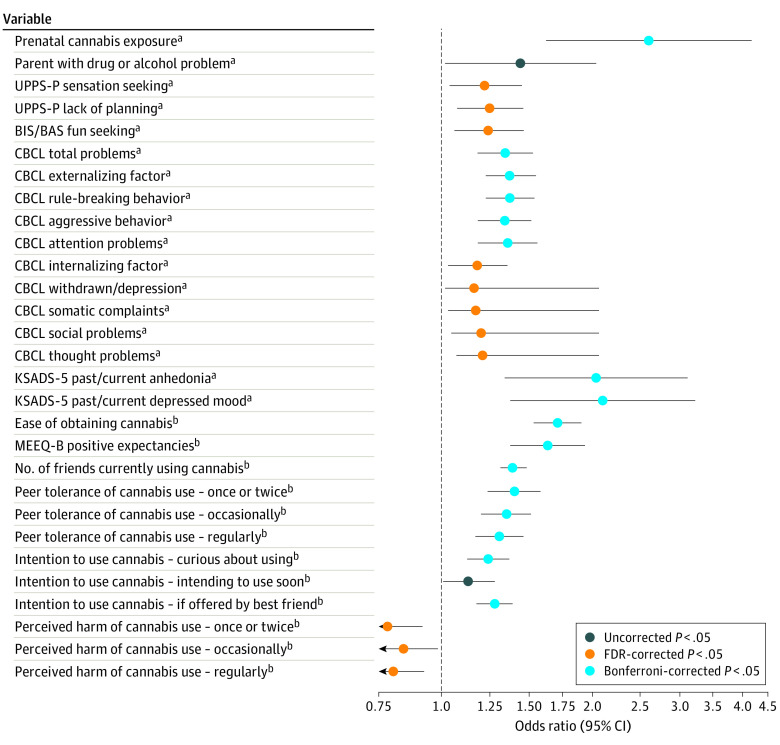Figure. Variables Associated With Cannabis Initiation as Children Enter Early Adolescence.
Odds ratios and 95% CIs, presented on a log scale, are from mixed-effects logistic models with binary cannabis use initiation outcome variable (0 = have not used, 1 = have used). Random intercepts were specified based on data collection site. Fixed-effect covariates included baseline (1) child sex (0 = female, 1 = male), (2-5) self-reported child race and ethnicity (Asian, Black or African American, Hispanic or Latino, White), (6-8) parent marital status (married or cohabiting, widowed, divorced), (9-11) parent education level (less than high school, high school diploma or equivalent, undergraduate degree), (12-15) household income (<$25 000; $25 000 to $49 999; $50 000 to $74 999; $75 000 to $99 999), (16) parent age at baseline, (17) family membership (0 = not related to any other child in sample, 1 = shared family membership), and (18) twin status (0 = not a member of twin pair, 1 = member of twin pair). All variables plotted are significant at uncorrected P < .05 with additional significance thresholds presented for 5% false discovery rate (FDR) and Bonferroni multiple testing corrections. Nonsignificant variables are not shown. Supplement 1 has additional details regarding variables and analytic approach. BIS/BAS indicates Child Behavioral Inhibition & Behavioral Activation Scales; CBCL, Child Behavior Checklist; KSADS-5, Kiddie Schedule for Affective Disorders and Schizophrenia; MEEQ-B, Marijuana Effect Expectancy Questionnaire–Brief; UPPS-P, modified UPPS-P Impulsive Behavior Scale for Children.
aAssessed at baseline.
bAssessed at 1-year follow-up.

